
Ethiopia: Climate resilience
Widespread improvements in the quality of life of many of the world’s populations have gone together with increased demands on natural resources. The planet is struggling to keep up, with increases in the average global temperature and the frequency of extreme weather events transforming ecosystems worldwide. Moreover, climate change impacts the world’s vulnerable people the most, many of whom lack the resources to adapt to new climate realities.
Rapid population growth in Ethiopia has brought with it a new trend of land grabbing, unsustainable exploitation of natural resources, and deforestation. As a result, these processes have led in some regions to the complete disappearance of vegetation. Unfortunately, these places are losing their natural character and function within the ecosystem.
Our main areas of focus are:
Climate resilient food and livelihood systems: here, we take a systems approach to livelihoods to improve food and nutrition security in climate-change vulnerable areas. This approach means analysing the root causes of poverty and nutrition insecurity, using a gender lens to identify the challenges the target group faces, and using a participatory process to identify opportunities and potential solutions. Approaches within this thematic area may include support to diversify livelihoods, such as food processing and marketing, debt relief and establishing links with social protection services, and supporting existing agricultural livelihoods.
Climate resilient WASH: here, technological solutions in climate-change vulnerable (e.g. drought- and flood-prone) areas are supported through enhanced governance and service-provider accountability. The key components of this approach are climate vulnerability assessments incorporating an analysis of GESI dynamics, the application of PIN’s Standards of WASH Programming and the participatory selection of appropriate climate-resilient solutions.
Productive and climate resilient landscapes: here, we address environmental degradation and the climate change-induced changes to the land, water and other resources people depend on for such things as agricultural productivity. Analysing geohazards alongside existing agricultural and livelihood practices is essential to providing a holistic solution that protects communities from the impact of natural disasters. It enhances agricultural productivity, livelihoods, and food security. Our response within this thematic area engages all key stakeholders, and our approaches include Early Warning Systems, Climate Smart Agriculture and Natural Resource Management techniques.
Ongoing aidORPast aid programmes

Participatory development of the landscape in the Sidama zone
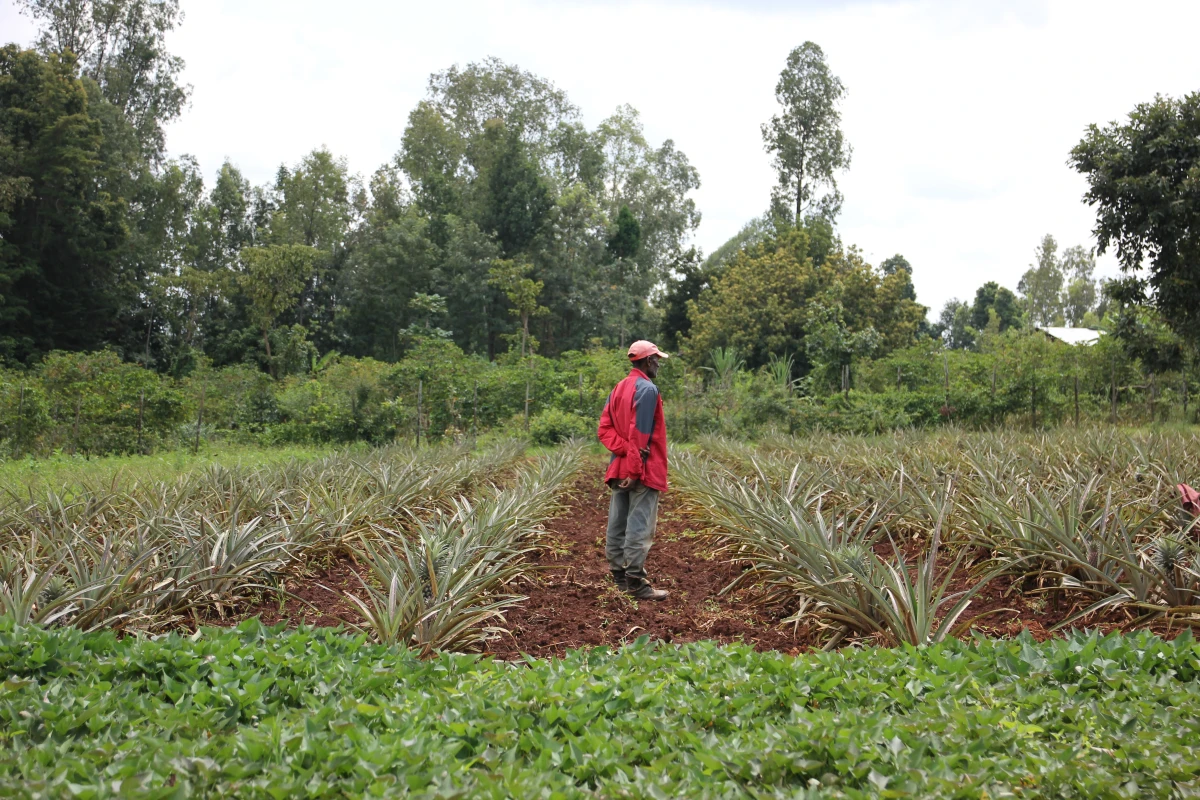
Agriculture Systems Adaptation Programme in Hambaricho Mountain Watershed - ASAP in Hambaricho
When: Since the year 2023 until the year 2025
Donors: Czech Development Agency, Czech Republic Development Cooperation
Due to climate change, Ethiopia suffers from recurrent rains, irregular rainy seasons, and extensive droughts. According to the ND GAIN (Country Index, 2020), which is determined by a combination of vulnerability and preparedness to climate change, Ethiopia is rated as 'low'. It is ranked 161st out of 182 countries. The vulnerability score is lowered mainly by poor health care as well as poor agricultural performance and structure.
The land cultivated by smallholder farmers, one of the beneficiaries of the project, accounts for 95 % of the total agricultural area, and these farmers contribute to more than 90 % of the total agricultural production. We are implementing an Environment, Livelihoods and Agriculture Strategy (ELAP) that places a strong emphasis on improving environmental sustainability, promoting good agricultural practices, supporting livelihoods and improving community resilience while ensuring sustainable management of local natural resources. Based on previous experience with similar projects, we are integrating digital technologies in landscape management planning. We are doing so through electronic geodata collection and soil analysis with the goal of establishing effective watershed management.
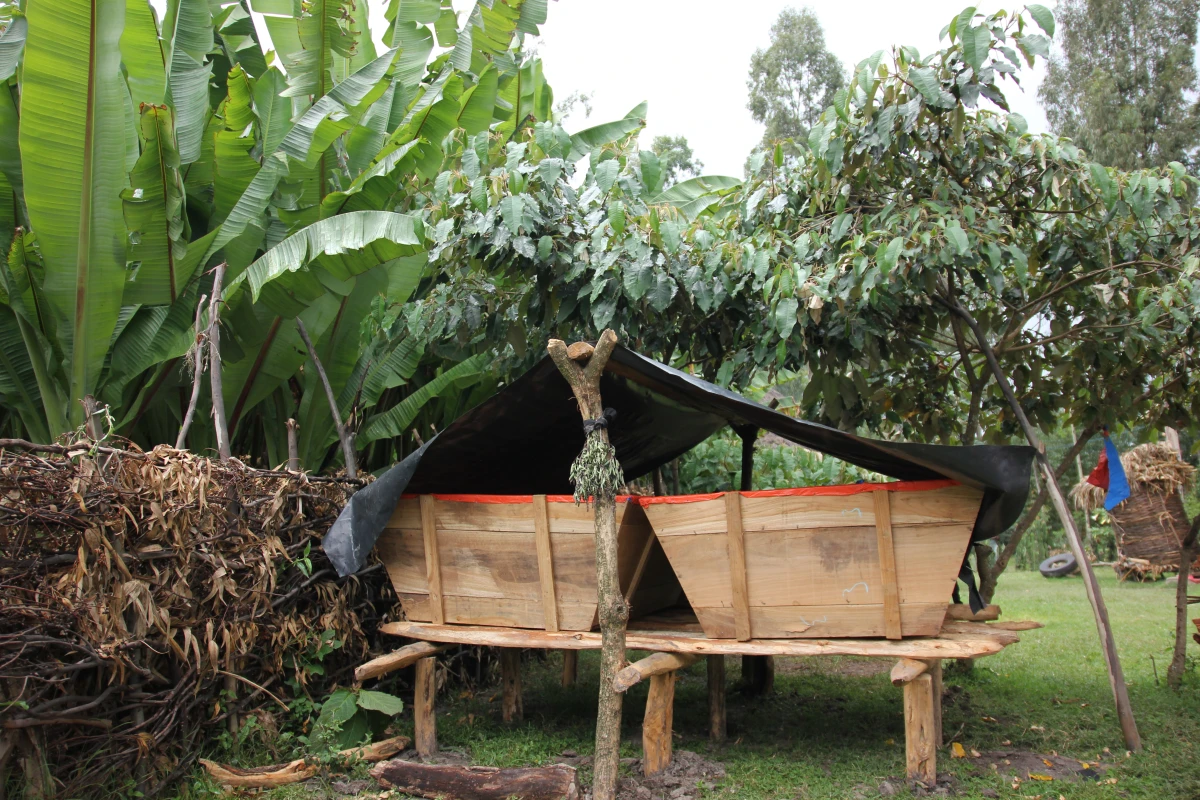
Agriculture Systems Adaptation Programme in Reqame Watershed, Halaba and Silte - ASAP in Reqame
When: Since the year 2023 until the year 2025
Donors: Czech Development Agency, Czech Republic Development Cooperation
Due to climate change, Ethiopia is one of the countries most at risk of drought, posing a considerable challenge to its people. The country faces increasingly unpredictable rainfall, and, in some years, it is entirely absent. The effects of climate change are felt in many ways, including more frequent and severe droughts and floods, less fertile soil, and more pests. These changes also lead to a loss of shrubs, grass, and forests. Mismanagement of natural resources and population growth are also worsening the impacts of climate change. And since agriculture is the core of the country's economy, it has a huge impact, especially on smallholder and women farmers who dominate the sector.
Thanks to the project, we can support rural development, including agriculture and ensure food security while protecting the landscape and sustainable management of land and forests. We are strengthening the capacities of local communities and territorial authorities through professional training and anti-erosion measures. We are also applying sustainable agricultural practices, such as diversification of the field crop varieties, fodder and tree species, installation and use of water harvesting and irrigation techniques, and promotion of soil restoration that increase the resilience and adaptability of forest ecosystems. Landscape plans using digital technologies to collect electronic geodata are implemented for effective watershed management as well.
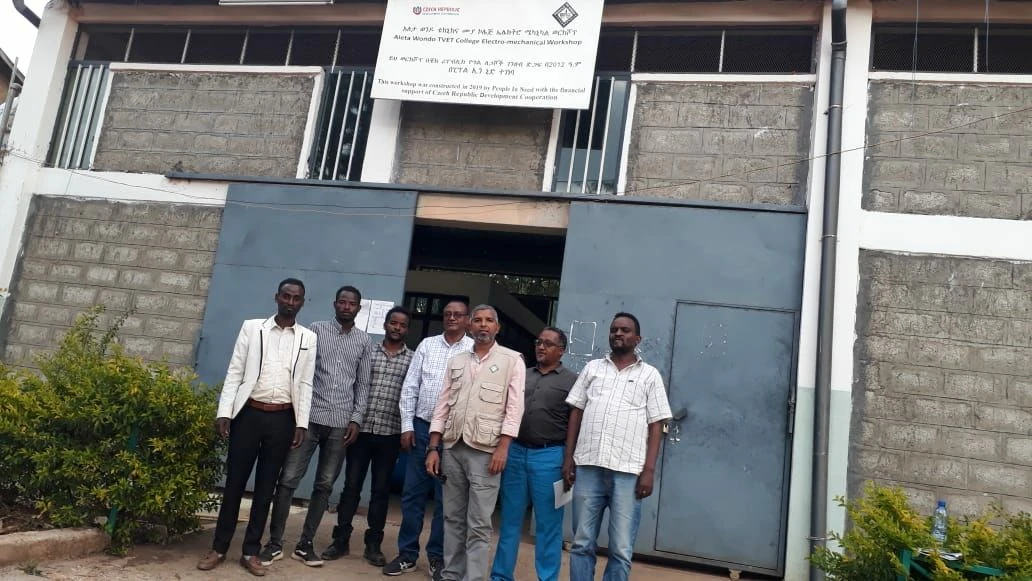
Support of selected town water utilities in the SNNP and Oromia regions, Ethiopia
When: Since the year 2023 until the year 2025
Donors: Czech Development Agency, Czech Republic Development Cooperation
Scarcity, irregular supply, and water contamination contribute significantly to the emergence and spread of infectious diseases, which pose significant threats to adult and children's health and quality of life. Despite the unfavourable situation, Ethiopia's proportion of people with access to clean drinking water has been increasing in recent years. One of Ethiopia's main goals is to ensure access to clean drinking water for as many people as possible. But often, such projects are unsustainable. This usually stems from a lack of capacity, poor management, and communication between users and managers. Moreover, the responses and problem-solving of responsible authorities are not sufficient.
To improve the situation, Ethiopia's Water, Sanitation, and Hygiene (WASH) sector is one of our priority areas. The project responds to the current conditions in two regions, SNNPR and Oromia, which aim to strengthen the professional capacities of urban water utilities in sustainable water management systems. Focus mainly on professional training, sharing experiences, capacity-building plans, and strengthening cooperation. The project is linked to a previous project with the same focus that ran from 2019 to 2021. In addition to the local partner institutions, the project will cooperate with Czech actors VRV and IRCON to strengthen the technical quality and transfer of Czech know-how to Ethiopia.
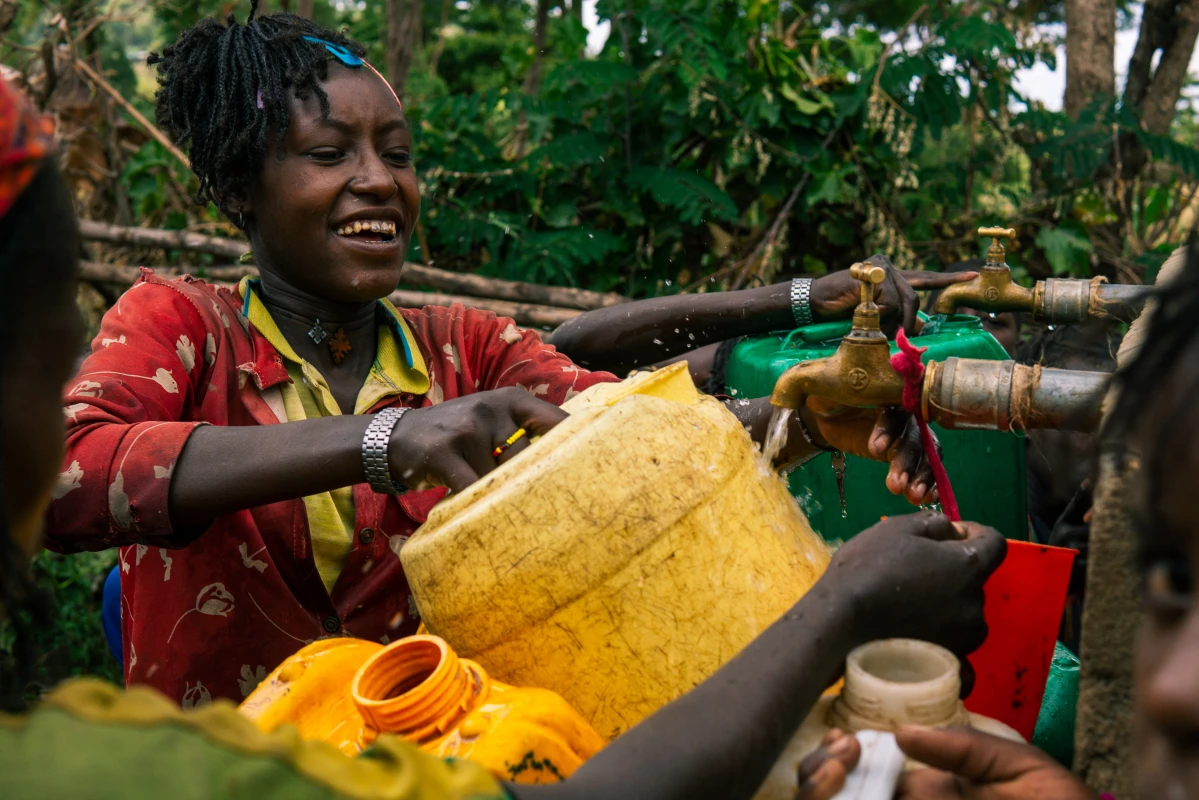
Improving health, hygiene and sanitation in the Hawassa Zuriya woreda, Sidama region, Ethiopia
When: Since the year 2021 until the year 2024
Donors: Czech Development Agency, Czech Republic Development Cooperation, Czech Republic Development Cooperation
People in Need has been implementing WASH, health and nutrition projects in the Sidama region (formerly SNNPR) for more than 15 years. As a result, PIN has extensive experience with a wide range of approaches and methods such as Sanitation Marketing, school WASH clubs and community health clubs. The aim of the project is to improve the hygiene and eating habits of all members of households. The project will contribute to improving the health system and sanitation facilities of health facilities and schools, among others through strengthening cooperation between relevant institutions and increasing their capacities. The project activities also include an awareness raising campaign to improve the hygiene and nutrition of the communities. The objective of the community activities is mainly to prevent infectious diseases and malnutrition, which contributes to the overall improvement of the health of the target population in Hawassa Zuriya, Sidama region, Ethiopia.
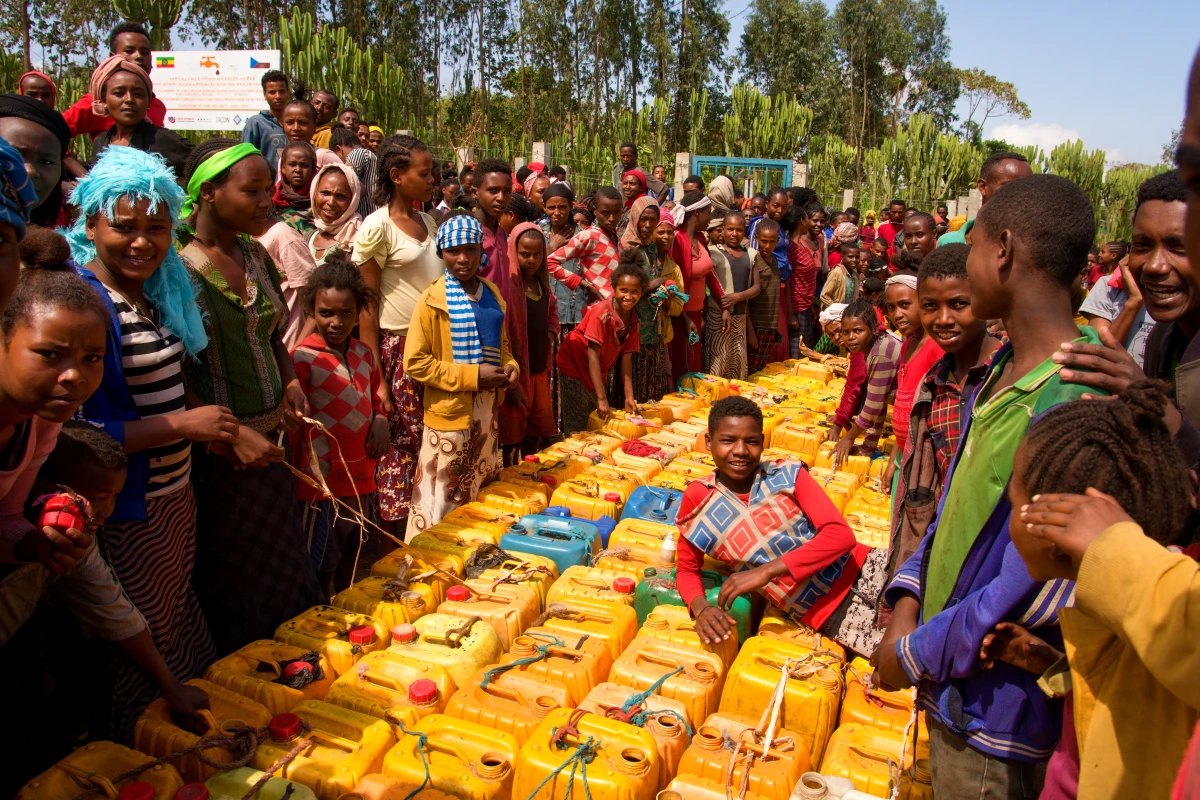
Establishment of a sustainable water system in selected kebeles of Bura, Dale and Bona Zuria Woredas
When: Since the year 2020 until the year 2023
Donors: Czech Development Agency, Czech Republic Development Cooperation, Czech Republic Development Cooperation
The aim of the ongoing project is to ensure universal and equal access to safe and affordable drinking water for all inhabitants of selected kebeles in the newly declared region of Sidama in southern Ethiopia. In addition to building new water supply systems, the project will also focus on their sustainability, through capacity building of operators, managers and support organizations. An integral part of the project will also be the assistance in setting up a tariff system that will allow access to affordable water for all members of target communities. Moreover, the project team will conduct the community awareness raising campaign regarding safe transport, water handling and storage, as this is the only way to ensure that water from the newly constructed supply systems is truly safe for its consumers.
The ongoing project represents a unique cooperation between the non-profit and private sector, where People in Need cooperates with the private company Ircon s.r.o., which is responsible for professional construction work, while the project team of People in Need provides community outreach and educational activities.
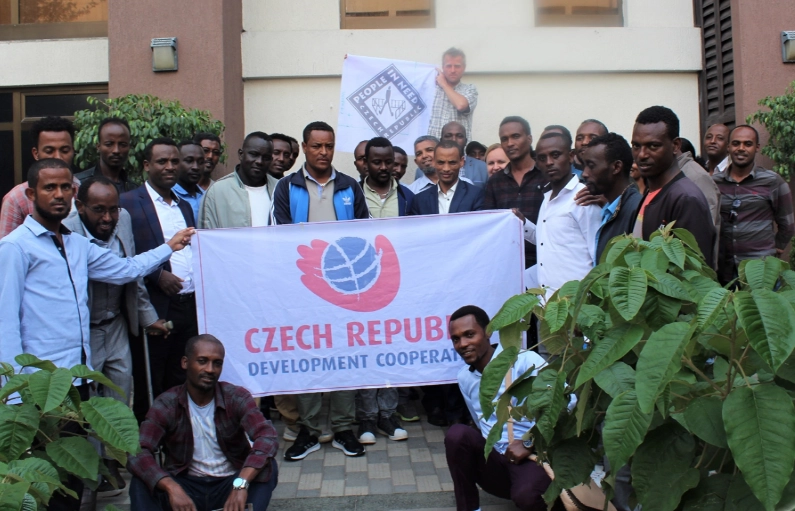
Support of Selected Town Water Utilities in Sustainable Water Scheme Management
When: Since the year 2019 until the year 2021
Donors: Czech Republic Development Cooperation
People in Need has extensive experience in projects dealing with sanitation, hygiene and access to safe water in Ethiopia. The aim of the project is to strengthen the capacities of selected town water utilities so that they are able to operate on market principles and thus ensure the uninterrupted supply of drinking water. The main outputs of the project is training of TWU employees and material support that will strengthen the management of municipal water systems.
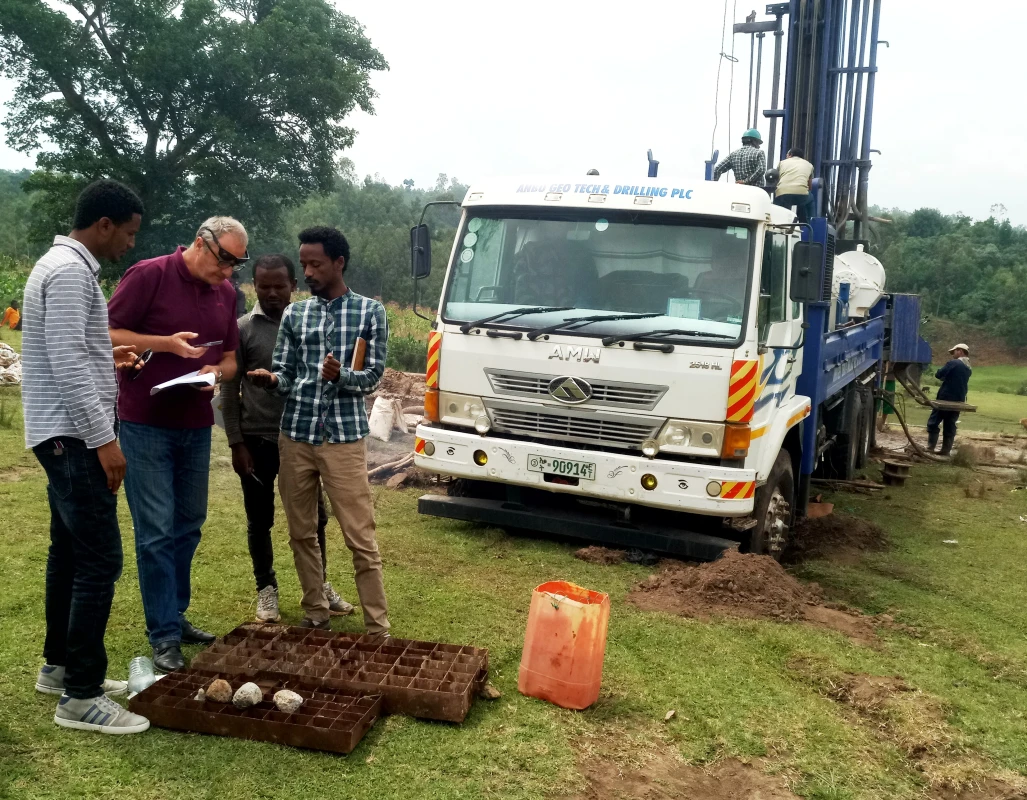
A
When: Since the year 2018 until the year 2018
Donors: Czech Republic Development Cooperation
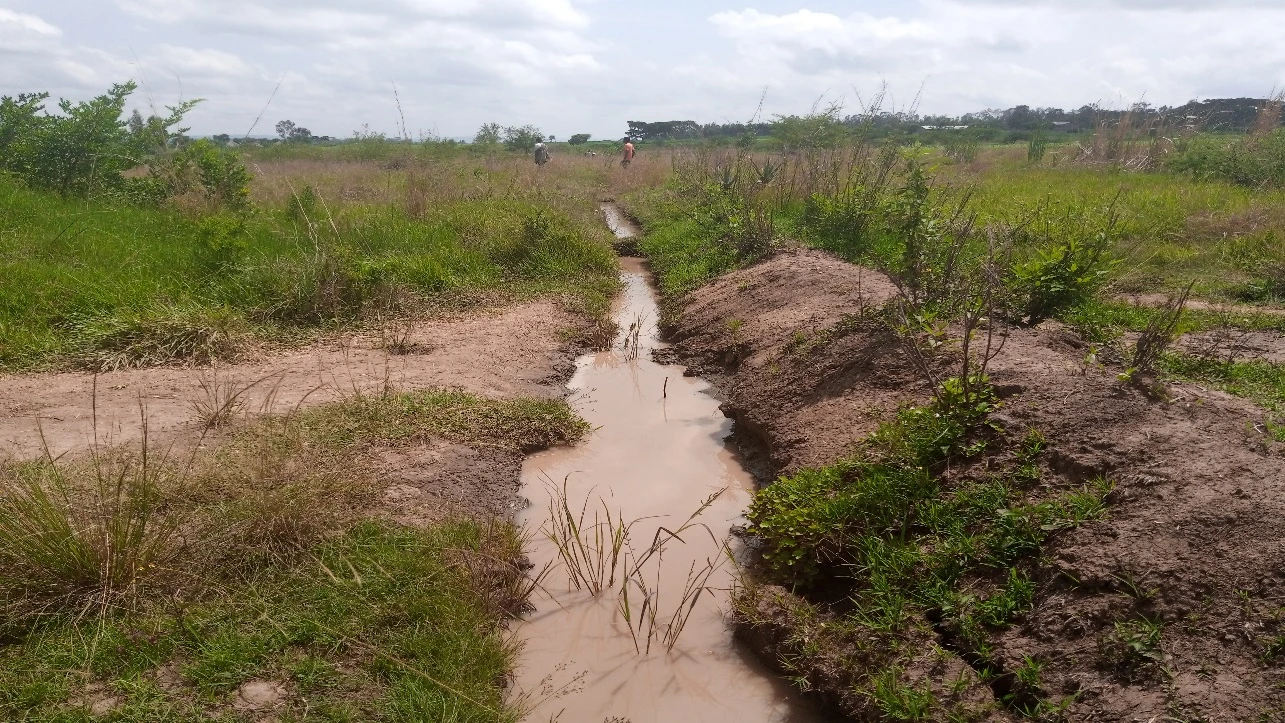
Participatory development of the landscape in Sidama zone
When: Since the year 2017 until the year 2020
Donors: Czech Development Agency
Among the implemented activities are creation of landscape development plans, construction of adaptation measures through community projects (construction of dams, retention and accumulation tanks etc.), promotion of good agriculture practices among farmers (Climate Smart Agriculture), establishing capacities of local government, supporting self-help groups or sustainable nutrition campaign for farmer families. Thanks to the various trainings and campaigns, farmers acquire appropriate skills in natural resources protection and conservation agriculture, which contributes to better livelihood and nutrition for their families.
The project has been implementing activities in cooperation with Hawassa University in Ethiopia and the Czech Research Institute for Soil Improvement and Soil Protection.
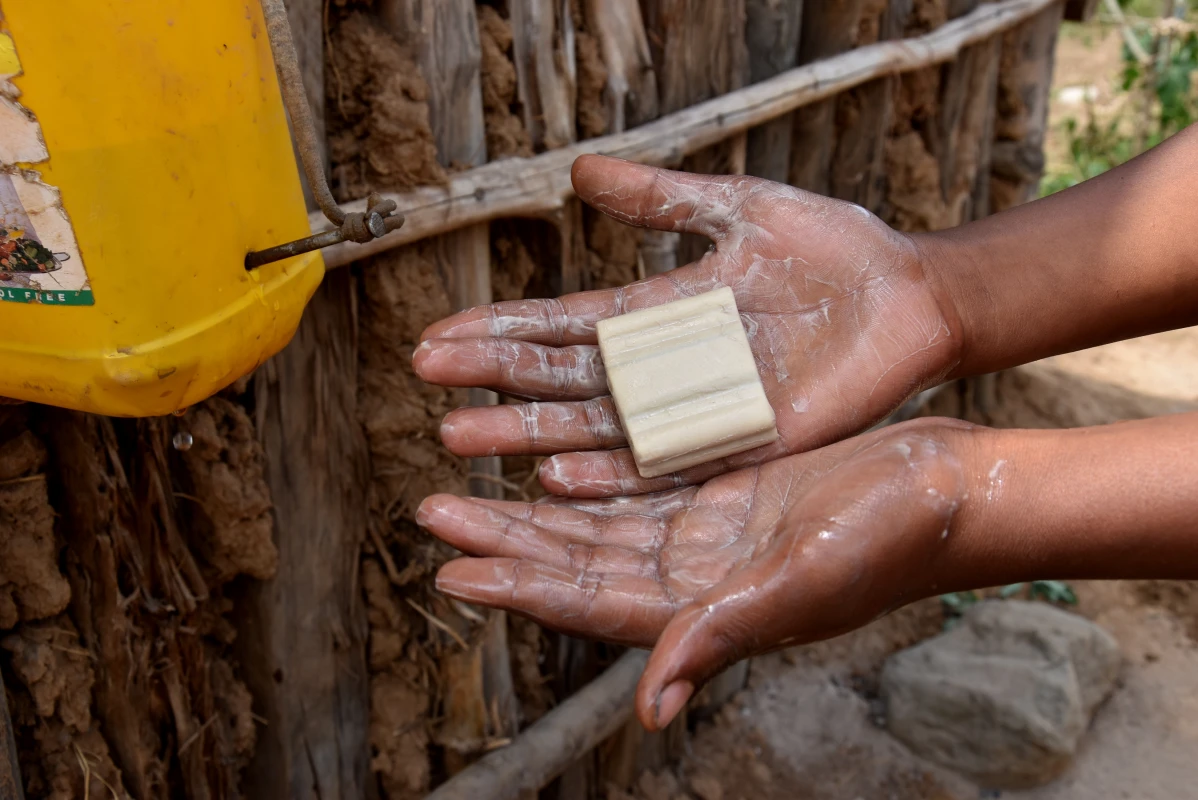
Improvements in health, hygiene and sanitation in selected cities and villages of Sidama zone
When: Since the year 2017
Donors: The Veolia Foundation, Real Gift, Czech Republic Development Cooperation

Sustained Diet Quality Improvement by Fortification with Climate-smart, Nutrition-Smart Orange-fleshed Sweetpotato
When: Since the year 2017 until the year 2021
Donors: European Commission, Czech Republic Development Cooperation
Sweetpotato is a cheap, nutritious solution for developing countries needing to grow more food on less land for rapidly multiplying populations. The orange-fleshed varieties of sweetpotato is easy to grow and suitable for climate conditions in Ethiopia, but it also can play a key role in alleviating vitamin A deficiency, which is rampant among children in Ethiopia (40%). Vitamin A Deficiency (VAD) increases the risk of disease and death from infections as well as causing blindness. Just 125 grams of OFSP meets the daily vitamin A needs of a young child. The objective of the action is therefore increased intake of vitamin A and improved food security of local farmers. Within the project, the local farmers will be trained in the field of sweet potato cultivation, the awareness raising campaign among local communities about the advantages of sweet potatoes’ cultivation and consummation will be held, the agricultural centres will be materially supported and the farmers will be linked to the local market.
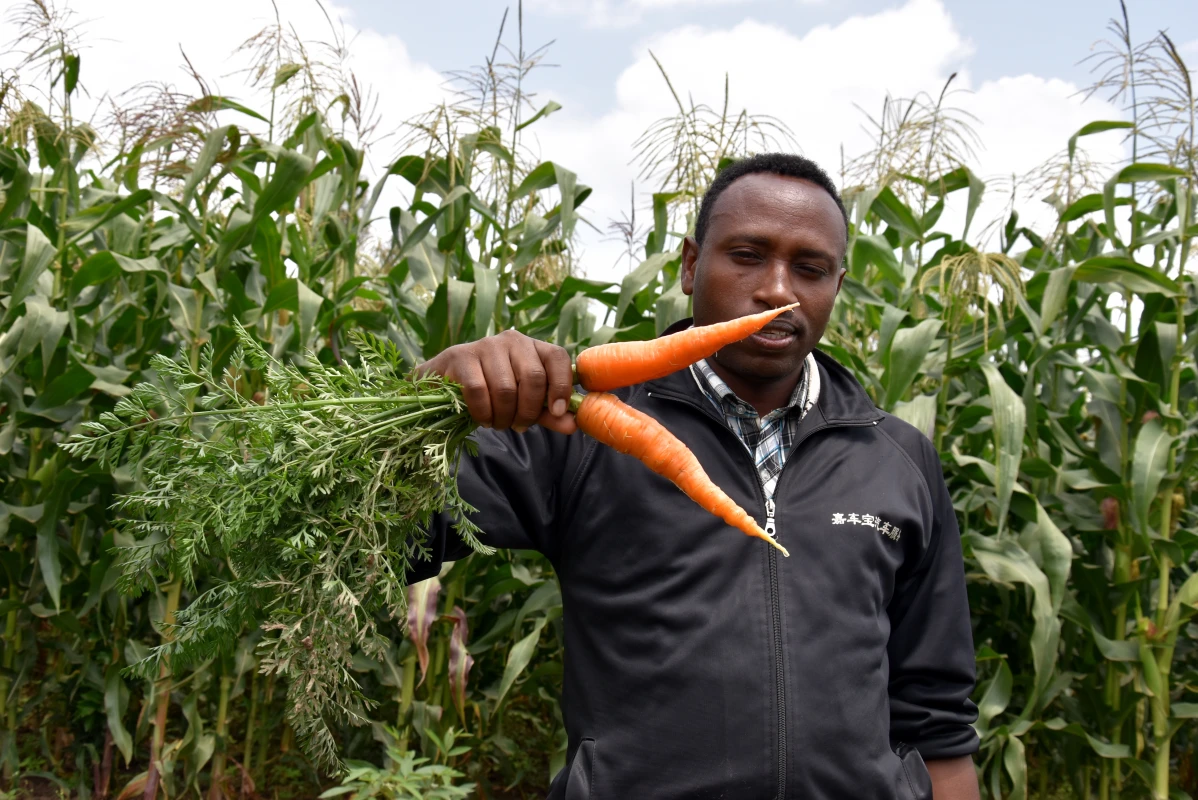
Improving livelihoods and nutrition through better community services
The low and ineffective agricultural productivity is one of the most important aspects threatening livelihoods and food security of local farmer communities in the target region. Our goal is therefore to improve the living conditions of poor farmers through sustainable agricultural practices, better nutrition and development of economic activities. Therefore, we improve effectiveness of existing community services and their better access for farmers, introduce sustainable agricultural practices (conservation agriculture and nutrition sensitive agriculture), appropriate processing, storage and marketing of products and increase of diversification in agricultural production with a special focus on nutrient-dense crops. One of the important elements of improving nutrition is awareness about the nutritionally valuable crops. Therefore, we train farmers in new farming practices but also educate local communities to enrich their diet and improve diet for themselves and their families. We cooperate not only with local farmers, but also with experts and government partners, which helped to identify the main challenges and the most effective solutions.

Water Report
In Ethiopia, PIN uses the application in Alaba Special Wareda in SNNPR region. Alaba is known for very deep water table and only way to provide drinking water to the communities is via motorized deep boreholes. Such systems are technically and financially demanding. WaterReport serves the purpose of communication channel between water source committees (WASHCOs) and Wareda administration.
There are two types of reports. One, problem report is being sent in case of malfunction or breakdown of any part of the complex system. It enables wareda technicians to respond swiftly and reduce “down-time” of the source. Second type of reporting is a regular one; WASHCOs send administrative data on monthly basis such as water consumption and financial data. This makes the system transparent and enables Wareda administration to store received data in electronic version.
Read more.
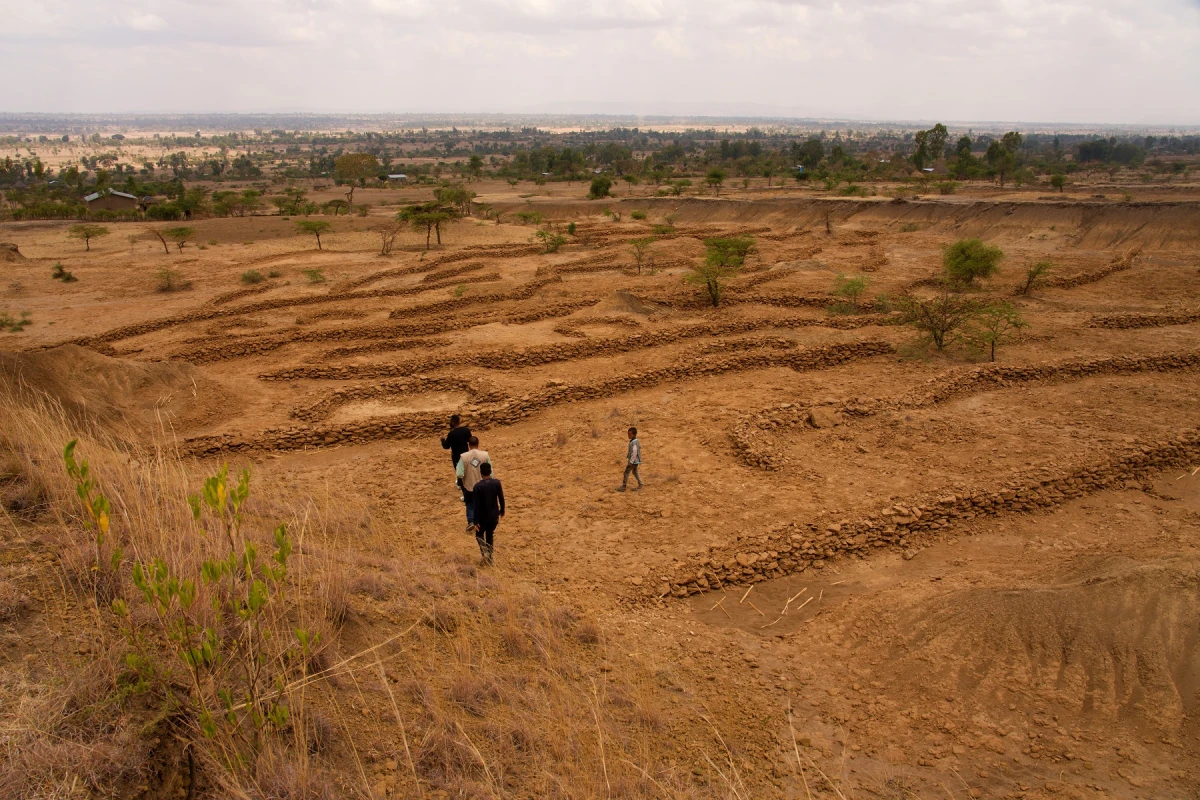
Increase of Ecological Stability in Dijo and Bilate Catchment Basins
When: Since the year 2016 until the year 2021
Donors: Real Aid, Real Gift, Czech Republic Development Cooperation
One of the main causes of soil degradation in the catchment basins of Dijo and Bilate rivers, which are the target areas of the project, was disruption of the natural dynamics by animals, grass and trees in savanna environment, excessive felling of trees and improper grazing, in particular. Moreover, the land and natural resources were further degraded by agriculture, which is increasingly in demand due to the growing population in the area. It resulted in a landscape with very low vegetation cover, both during the drought and rainy seasons. This leads to low capacity of soil to keep water and consequently to drying of the land and accelerated runoff of the surface water. The drying involves soil erosion, loss of soil nutrients and degradation of organic soil components causing low soil fertility, reduced food security and high incidence of malnutrition.
This project therefore aims to strengthen the capacity of actors responsible for the promotion of sustainable management of local sources, representatives of local communities, employees of farmer training centres and government officials in particular. Their cooperation will allow the communities of the target kebeles to actively implement the long-term measures for the rehabilitation and protection of communal and individually managed lands. Specific project activities include the creation of landscape development plans, support for community forest nurseries, implementation of natural anti-erosion measures through community projects or work with farmers and their education in environmentally friendly farming techniques. Through the activities implemented, the project contributes to the sustainable development of the landscape, the protection of natural resources and a better livelihood of the local households.
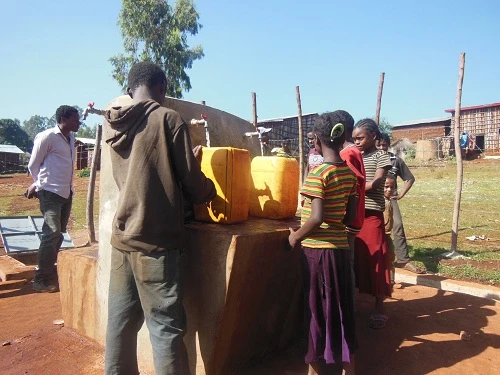
Ensuring Sustainable Access to the Drinking Water in Sidama Zone
When: Since the year 2014
Donors: The Veolia Foundation, Real Aid, Real Gift, Czech Republic Development Cooperation
Public is also involved in the project through meetings and trainings which provide the community members with information about good hygiene habits, especially those concerning proper handling and storage of drinking water.
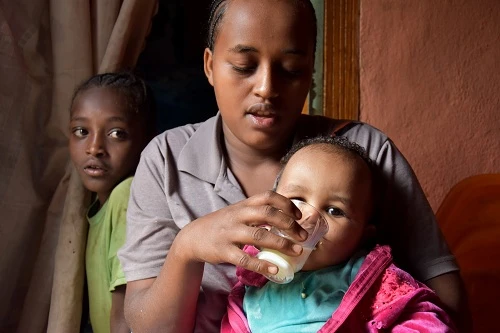
Program for Improved Nutrition in Sidama and Gedeo Zones (IPIN)
Každý rok zemřou tři miliony dětí na problémy spojené s podvýživou v prvních 1000 dnech svého života.
Mnoho dalších je postiženo celoživotním následky – fyzickým či kognitivním poškozením vývoje, jež dále vedou k větším náchylnostem k nemocem, horším výsledkům ve škole a tím pádem i nižším výdělkům v dospělosti. I když se jejich výživa později zlepší, škody napáchané během tohoto období života se z drtivé části nedají napravit. Příčinám podvýživy přitom lze snadno předejít. K dětské úmrtnosti a chudobě ve světě totiž často přispívají špatné hygienické podmínky, málo pestrá strava, nedostatečné zdravotní služby či malá pozornost politiků a donátorů.
Projekt se zaměřuje na osvětu týkající se výživu kojenců (propagace kojení), hygienických návyků (například mytí rukou), ale i větší pestrost jídelníčku díky pěstování více druhů plodin. Velkou roli v projektu hrají vyškolení dobrovolníci, kteří osvětu mezi místním obyvatelstvem provádějí.
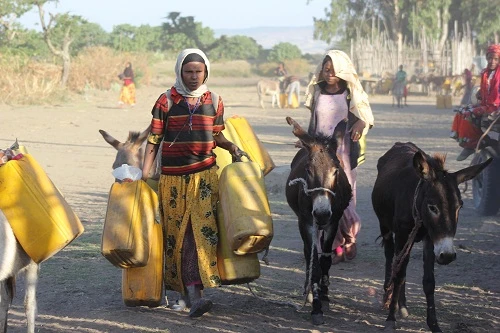
Ensuring Sustainable Access to Drinking water
When: Since the year 2014 until the year 2015
Donors: Czech Republic Development Cooperation, Real Aid, Real Gift, Veolia, Abakus Foundation
Additionally, the emphasis will be placed on water scheme management. Trainings are prepared for the staff of the local water associations to help them to operate the water system in a better way and to effectively respond to operational problems. As the major obstacle seems to be lengthy and often ineffective communication between the scheme operators and the water offices, who manage the repairs, there has been an electronic system for reporting malfunctions introduced in the area. Thanks to simple software, the officials are now able to address the problems reported by the scheme operator via a text message immediately.
The difference between this project and those of similar nature implemented in the area lies not only in the newly introduced e-reporting system but also in inclusion of the private sector in the project activities, local suppliers of spare parts in particular.
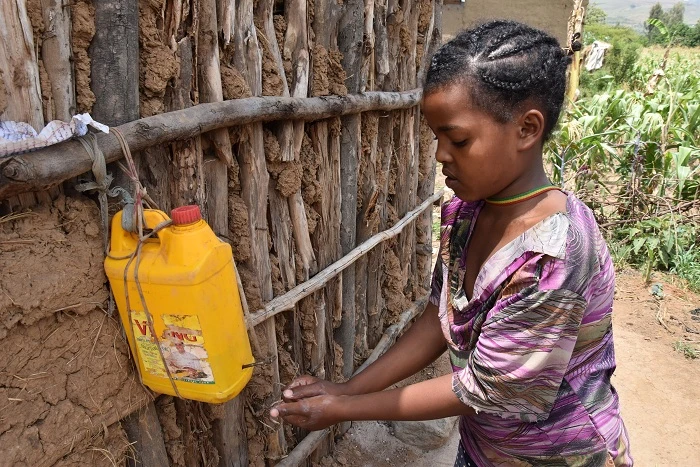
Creating Resilience in Emergency Prone Areas through Multi-Sectoral Approach
When: Since the year 2012 until the year 2016
Donors: EU Humanitarian Aid, Veolia, Czech Republic Development Cooperation
In the area of water and sanitation the main objective is to improve access to drinking water by building water infrastructure and increasing awareness of hygiene and sanitation practices in the communities, health-care centres and schools. All activities lead to building long-term resilience to crises and environmental upheaval as well as to diarrheal diseases caused by unsafe water consumption.
The main objective of the intervention lies in encouraging behavior change in the community through campaigns to promote hygiene practices, strengthen infrastructure (construction and rehabilitation of water schemes) and by increasing expert knowledge of the government officials. Improving access to sanitation is ensured by the construction of latrines at the key public institutions and demonstration latrines in public places. The emphasis is also placed on proper waste management at health-care centres.

Support of restoring livelihoods
When: Since the year 2012 until the year 2012
Donors: Ministry of Foreign Affairs of the Czech Republic
PIN responded to the disaster by distributing herding animals to approximately 430 affected families (ten goats per family) and furthermore provided animal medical control and vaccination. It is assumed that 70 % of these assisted families will be able to gain better access to food produce or to sustain sales of reproduced herd.
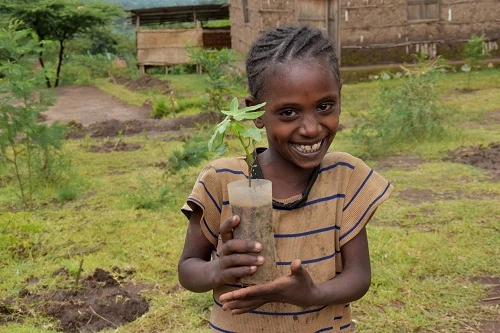
Support of Agricultural Trade and Sustainable Management of Natural Resources
When: Since the year 2011 until the year 2015
People in Need (PIN) has adopted a holistic approach to improve ecological stability of those affected by the floods. At the same time it has been strengthening the capacity of people responsible for their long-term protection. In close cooperation with local agricultural authorities, PIN provides support for community development agents and seeks to involve communities in the development and implementation of plans for sustainable management of the landscape. These practical plans – developed with technical specialization by relevant experts – outline long-term priorities and obligations for communities for effective watershed management. Areas which are affected by erosion the most are closed and protected by legislation on community level in order to prevent the territory against grazing. This allows thousands of new trees to grow in peace and to protect soil from erosion.
In order to reduce the need for fuelwood, PIN supports local communities in selling of stoves with low energy consumption. Within project, marketing strategies for promotion of stoves are being developed and links between sellers and buyers established. The project supports households in securing alternative sources of livelihood, such as beekeeping. In terms of management of natural resources, beekeeping is an additional activity of farmers, because in order to increase the yield of honey, the communities seek to secure enough bee forage, and thus contribute to protection and regeneration of vegetation.
In total, 3,115 people living in the surroundings of rehabilitation areas benefit from the project directly, together with local development workers, government officials and manufacturers, dealers and distributors of energy-saving stoves for cooking. The final number of beneficiaries gaining support from the project amounts to 30,814 people, all residents of 4 target kebeles of Shebedino district.
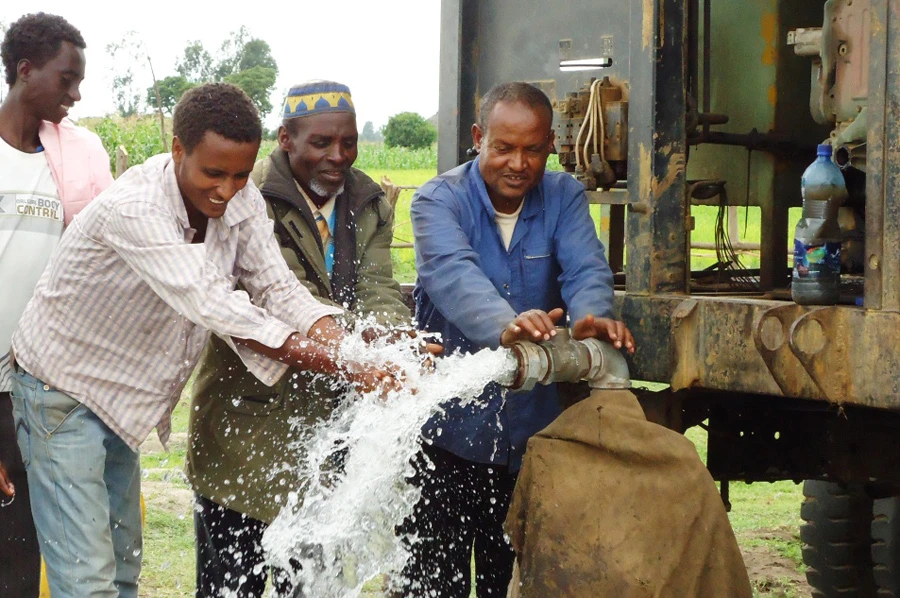
Long-term sustainable management of water sources
When: Since the year 2011 until the year 2013
Donors: Czech Republic Development Cooperation, IRCON, T. G. Masaryk Water Research Institute, public research institution, The Veolia Foundation
PIN are working with local authorities to repair the damaged wells and with technical departments of local governments to acquire equipment for routine repair of pumps. The program also includes an educational campaign to promote hygiene practices among residents, hoping that the campaign will reduce the risk of waterborne diseases and plagues, which are very common in the field.
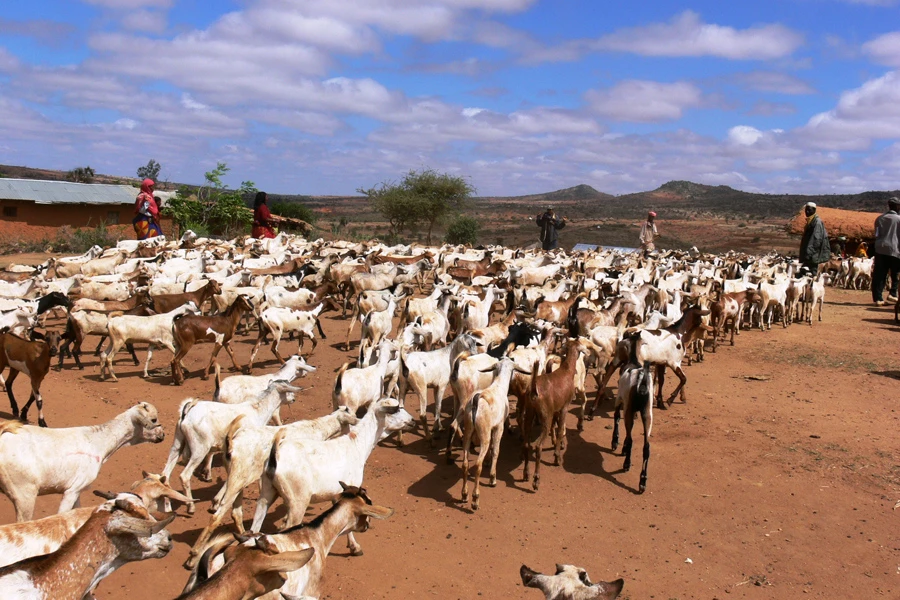
Restoration of livelihoods
When: Since the year 2010 until the year 2010
Donors: Ministry of Foreign Affairs of the Czech Republic
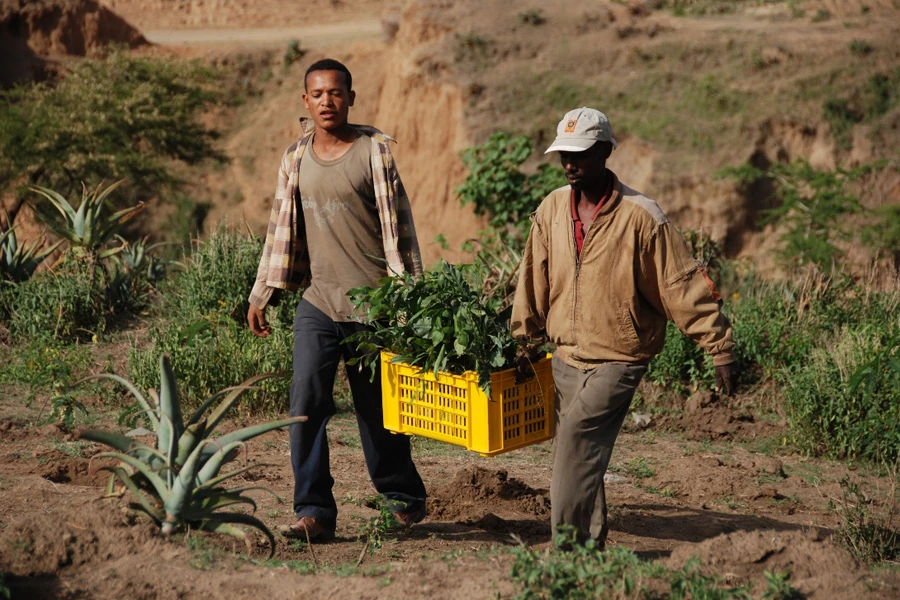
Afforestation of land and protection against erosion
When: Since the year 2008 until the year 2008
Donors: Ministry of Agriculture of the Czech Republic
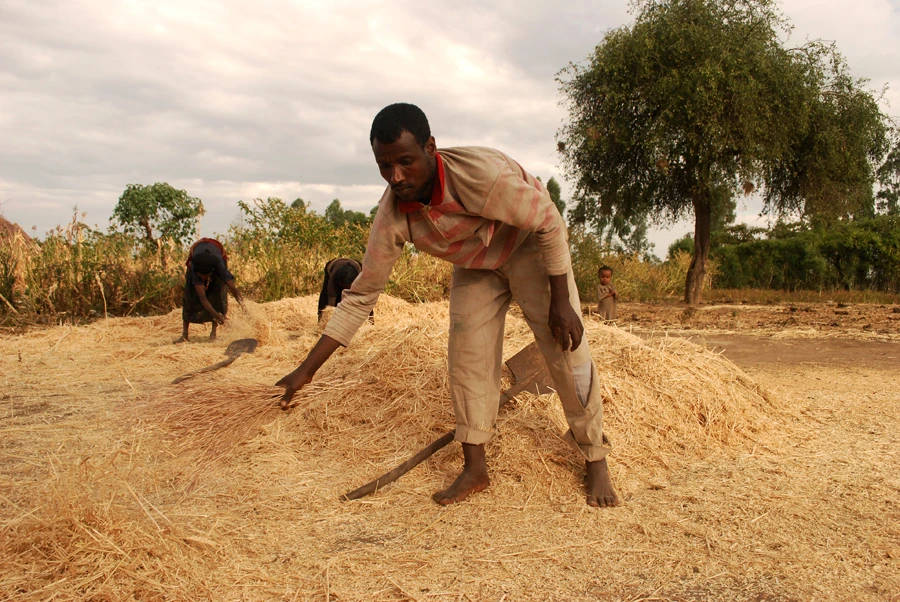
Sustainable Management of Natural Resources and Introduction of New Technologies
When: Since the year 2006 until the year 2013
Donors: Czech Republic Development Cooperation
Another way how to prevent deforestation is the use of alternative building materials. African schools are traditionally built of wood and clay, however this method of construction reduces their lifespan and contributes to deforestation. There is still a vital need to build more schools in Ethiopia as the demand exceeds the capacity of local communities and NGOs. PIN has therefore decided to test the schools construction using proven technology that has been developed in South Africa and has successfully spread throughout the African and Asian continent. During this project, 13,000 bricks formed from clay (containing 5 % cement) were made by specially trained members of the local community.
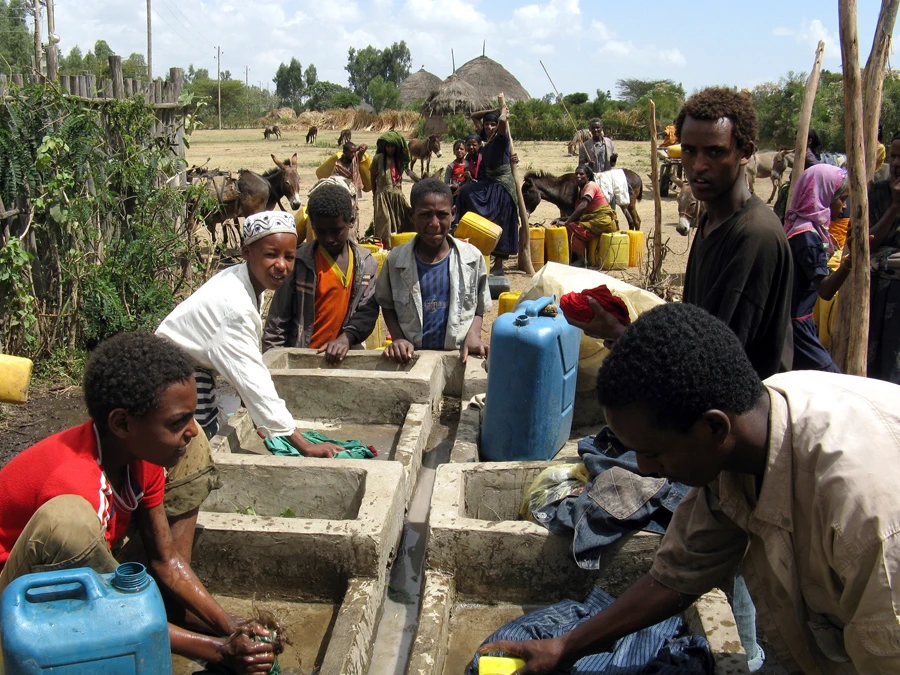
Ensuring access to safe drinking water and reduction of diarrheal disease
When: Since the year 2001 until the year 2013
Donors: Czech Republic Development Cooperation, Real Aid, Veolia, IRCON









